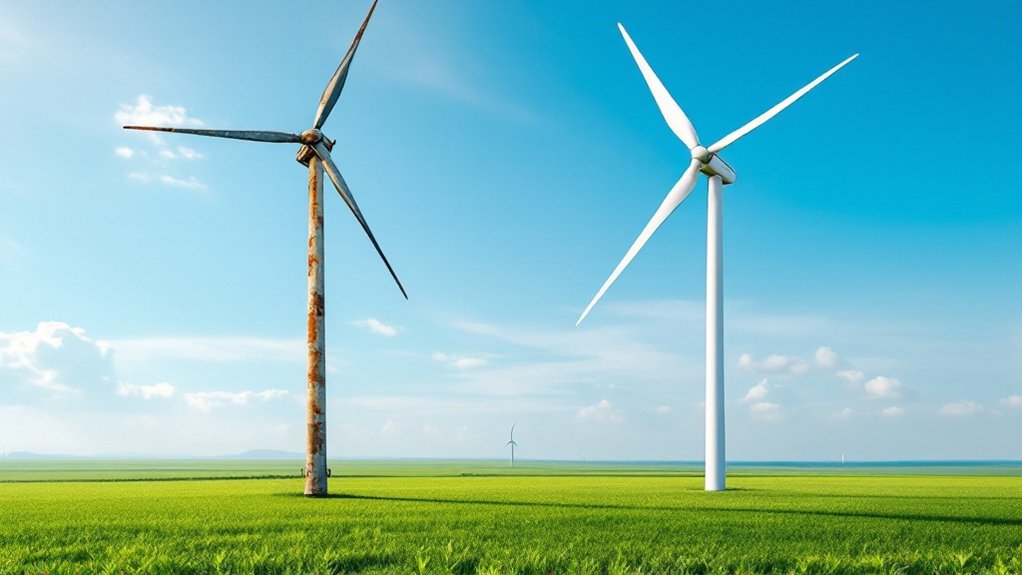
Comparing Conventional Vs Advanced Wind Turbine Systems
The evolution of wind turbine systems highlights a stark contrast between conventional and advanced technologies. Conventional turbines typically operate at fixed speeds, limiting their efficiency. In contrast, advanced turbines utilize variable-speed technology and innovative designs that enhance energy capture. This comparison raises important questions about performance, environmental impact, and future trends in wind energy. Understanding these differences may shape the future of renewable energy strategies and community acceptance.
Overview of Conventional Wind Turbine Systems
Although various designs exist, conventional wind turbine systems typically consist of three main components: the rotor, the generator, and the tower. The rotor, equipped with blades, captures wind energy and converts it into rotational motion. This motion is transmitted to the generator, where it is transformed into electrical energy. The tower supports the rotor and generator, elevating them to an ideal height for wind capture, minimizing turbulence caused by the ground. Conventional wind turbines are primarily designed for onshore use and have been widely implemented due to their reliability and efficiency. Their designs can vary in size and capacity, catering to different energy demands, yet they maintain a standard operational principle, harnessing wind energy to produce sustainable electricity. Furthermore, renewable energy sources like wind are crucial for reducing greenhouse gas emissions and combating climate change.
Advanced Wind Turbine Technologies
Conventional wind turbine systems have laid the groundwork for the development of advanced wind turbine technologies that aim to enhance efficiency and energy output. These innovations include larger rotor diameters and higher hub heights, allowing for greater energy capture in diverse wind conditions. Additionally, the incorporation of materials such as carbon fiber reduces weight while improving durability. Advanced control systems utilize artificial intelligence to optimize turbine performance in real-time, adjusting blade pitch and yaw to maximize energy generation. Moreover, innovations like vertical-axis wind turbines and floating platforms expand potential installation sites, making wind energy accessible in previously unsuitable locations. These advanced technologies not only promise improved performance but also contribute to the overall sustainability of wind energy systems. Furthermore, the shift towards renewable energy plays a crucial role in advancing wind turbine technologies and enhancing their integration into the global energy landscape.
Efficiency and Performance Comparisons
As the demand for renewable energy grows, comparing the efficiency and performance of various wind turbine systems becomes essential. Conventional wind turbines typically feature fixed-speed operations and simpler designs, which can limit their efficiency in varying wind conditions. In contrast, advanced wind turbine systems employ variable-speed technology, enabling them to adapt to fluctuations in wind speed and optimize energy capture. Additionally, advanced systems often incorporate enhanced aerodynamic designs and materials, resulting in improved overall performance. Performance metrics, such as capacity factor and energy output, reveal that advanced systems generally outperform conventional counterparts, particularly in diverse environments. Ultimately, understanding these efficiency differences is vital for stakeholders aiming to maximize energy production and investment in renewable energy technologies. Moreover, the integration of advanced collaboration tools can further enhance the management and operation of wind energy projects.
Environmental Impact and Sustainability
The efficiency of wind turbine systems is not only measured by their energy output but also by their environmental impact and sustainability. Conventional wind turbines, while effective in generating power, can pose risks to local wildlife, including birds and bats, through collisions. Additionally, their manufacturing processes and land use can contribute to ecological disruption. In contrast, advanced wind turbine systems are often designed with greater consideration for sustainability. They incorporate eco-friendly materials and technology aimed at minimizing visual and noise pollution, while also focusing on reducing the carbon footprint associated with production and installation. Overall, the environmental impact of wind turbine systems is a vital aspect that influences their long-term viability and acceptance within communities, highlighting the importance of continuous improvement in design and operation. Embracing minimalism in design not only enhances functionality but also promotes a more harmonious relationship with the environment.
Future Trends in Wind Energy Systems
What innovations lie ahead for wind energy systems? The future of wind energy appears promising, characterized by advancements in turbine design, materials, and efficiency. Researchers are focusing on larger, more efficient blades that harness wind energy more effectively and reduce noise. Digital technologies, including artificial intelligence and IoT, are anticipated to optimize turbine performance and predictive maintenance, enhancing longevity and reducing operational costs. Additionally, floating wind farms are gaining attention, enabling energy generation in deeper waters where winds are stronger. Energy storage solutions, such as advanced batteries, are expected to complement wind energy systems, addressing intermittency issues. Overall, these trends indicate a shift towards more sustainable and efficient wind energy solutions, paving the way for a cleaner energy future. Practicing mindfulness in daily life can enhance our awareness of the importance of sustainable energy practices.
Frequently Asked Questions
What Are the Maintenance Costs for Conventional Vs Advanced Wind Turbines?
Maintenance costs for wind turbines vary considerably, influenced by factors such as technology, design, and operational conditions. Generally, advanced systems may incur lower long-term costs due to enhanced reliability and reduced frequency of repairs compared to conventional models.
How Do Geographical Factors Affect Wind Turbine Efficiency?
Geographical factors considerably influence wind turbine efficiency by affecting wind speed, direction, and turbulence. Locations with consistent, strong winds typically yield higher energy output, while areas with variable conditions may experience decreased performance and increased maintenance challenges.
What Is the Lifespan of Conventional and Advanced Wind Turbines?
The lifespan of wind turbines typically ranges from 20 to 25 years. Factors influencing longevity include materials, maintenance practices, and environmental conditions, which can affect both conventional and advanced turbine systems differently over time.
Are There Any Subsidies for Installing Wind Turbines?
Various governments and organizations offer subsidies for installing wind turbines to promote renewable energy. These financial incentives aim to reduce installation costs, making wind energy projects more affordable and encouraging wider adoption of clean energy technologies.
How Do Noise Levels Compare Between the Two Systems?
Noise levels from wind turbines vary, with conventional systems typically generating more sound due to their design and operation. Advanced systems often incorporate technologies that reduce noise, resulting in quieter performance and less impact on nearby communities.
Conclusion
In summary, the comparison between conventional and advanced wind turbine systems highlights the transformative potential of technological advancements in the wind energy sector. While conventional turbines operate at fixed speeds, limiting efficiency, advanced systems leverage variable-speed technology and innovative designs to optimize energy production and address environmental concerns. As the demand for sustainable energy sources continues to grow, the evolution of wind turbine technologies will play an essential role in enhancing energy capture and community acceptance.



